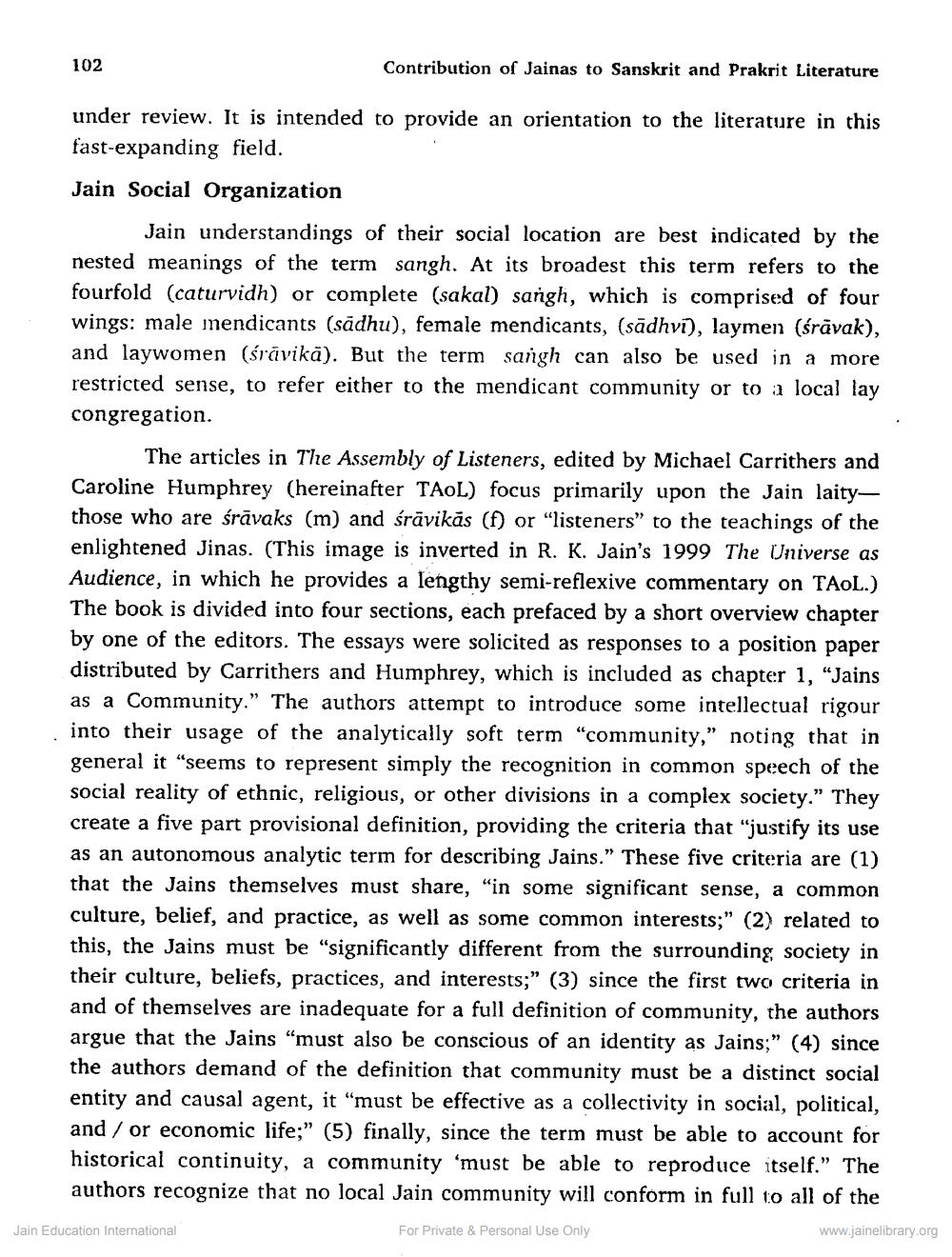________________
102
Contribution of Jainas to Sanskrit and Prakrit Literature
under review. It is intended to provide an orientation to the literature in this fast-expanding field.
Jain Social Organization
Jain understandings of their social location are best indicated by the nested meanings of the term sangh. At its broadest this term refers to the fourfold (caturvidh) or complete (sakal) sangh, which is comprised of four wings: male mnendicants (sādhu), female mendicants, (sādhvi), laymen (śravak), and laywomen (śrávikā). But the term sangh can also be used in a more restricted sense, to refer either to the mendicant community or to a local lay congregation.
The articles in The Assembly of Listeners, edited by Michael Carrithers and Caroline Humphrey (hereinafter TAOL) focus primarily upon the Jain laitythose who are śrāvaks (m) and śrāvikās (f) or "listeners" to the teachings of the enlightened Jinas. (This image is inverted in R. K. Jain's 1999 The Universe as Audience, in which he provides a lengthy semi-reflexive commentary on TAOL.) The book is divided into four sections, each prefaced by a short overview chapter by one of the editors. The essays were solicited as responses to a position paper distributed by Carrithers and Humphrey, which is included as chapter 1, "Jains as a Community." The authors attempt to introduce some intellectual rigour into their usage of the analytically soft term "community," noting that in general it “seems to represent simply the recognition in common speech of the social reality of ethnic, religious, or other divisions in a complex society.” They create a five part provisional definition, providing the criteria that "justify its use as an autonomous analytic term for describing Jains." These five criteria are (1) that the Jains themselves must share, “in some significant sense, a common culture, belief, and practice, as well as some common interests;" (2) related to this, the Jains must be "significantly different from the surrounding society in their culture, beliefs, practices, and interests;” (3) since the first two criteria in and of themselves are inadequate for a full definition of community, the authors argue that the Jains “must also be conscious of an identity as Jains;" (4) since the authors demand of the definition that community must be a distinct social entity and causal agent, it "must be effective as a collectivity in social, political, and / or economic life;" (5) finally, since the term must be able to account for historical continuity, a community must be able to reproduce itself.” The authors recognize that no local Jain community will conform in full to all of the
Jain Education International
For Private & Personal Use Only
www.jainelibrary.org




